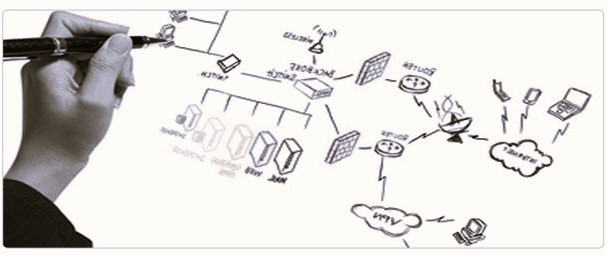In the digital age, a robust IT infrastructure is the backbone of any successful business, regardless of its size. For small businesses, building and maintaining a secure and efficient IT framework is especially critical. This article provides a comprehensive guide on how small businesses can establish a robust IT infrastructure to support their operations, enhance productivity, and ensure the security of their digital assets.
Assessing Business Needs
1. Identify Core Business Processes:
Before diving into IT infrastructure development, it’s crucial to identify and understand the core processes of the business. This includes sales, marketing, finance, and customer service. Each department may have unique requirements that influence the IT infrastructure design.
2. Scalability Planning:
Consider the scalability of the IT infrastructure. A robust system should be able to accommodate the growth of the business. This involves assessing potential increases in data volume, user numbers, and application complexity.
Building a Robust IT Infrastructure

1. Reliable Hardware and Networking:
Invest in reliable hardware components such as servers, workstations, and network devices. A stable and fast network infrastructure is essential for seamless communication and data transfer within the organization.
2. Cloud Services Integration:
Leverage cloud services for increased flexibility and accessibility. Cloud platforms like Amazon Web Services (AWS), Microsoft Azure, and Google Cloud offer scalable solutions for storage, computing power, and applications, reducing the need for extensive physical infrastructure.
3. Data Security Measures:
Prioritize data security. Implement firewalls, encryption protocols, and regular security audits to protect sensitive business data. Backup solutions and disaster recovery plans should also be in place to mitigate potential data loss.
4. Collaboration Tools:
Facilitate communication and collaboration among team members with tools like Slack, Microsoft Teams, or Zoom. These platforms enhance teamwork, especially in remote or distributed work environments. Do you like the article? Read about the Role of IT in sustainable development.
5. Business Management Software:
Implement business management software to streamline operations. Enterprise Resource Planning (ERP) systems, Customer Relationship Management (CRM) software, and project management tools can enhance efficiency and provide valuable insights into business processes.
6. Website and E-commerce Platforms:
If applicable, invest in a robust website and e-commerce platform. These platforms serve as essential touchpoints for customers and can significantly impact the overall success of the business.
7. Mobile Device Management (MDM):
With the increasing use of mobile devices in the workplace, consider implementing Mobile Device Management solutions. MDM helps secure and manage mobile devices, ensuring data protection and compliance with security policies.
8. Regular System Updates and Maintenance:
Schedule regular updates and maintenance to ensure that all software and systems are running efficiently and securely. This includes operating system updates, antivirus software, and patches for vulnerabilities.
Training and Support
1. Employee Training:
Provide comprehensive training for employees on the use of IT tools and best practices. This not only enhances productivity but also reduces the risk of security breaches caused by human error.
2. IT Support:
Establish a reliable IT support system. This could be an in-house IT team or outsourced support services. Having a dedicated support system ensures that issues are addressed promptly, minimizing downtime and disruptions.
Standards in IT Infrastructure

To maintain industry best practices and adhere to standards in IT infrastructure development, small businesses can refer to resources such as the Wikipedia page on Information Technology Infrastructure. This page offers insights into the components and considerations of IT infrastructure, providing a foundation for businesses looking to align their practices with established standards.
Future Considerations
As technology continues to evolve, small businesses should remain adaptable. Regularly reassess the IT infrastructure to incorporate emerging technologies and address evolving business needs. Keeping an eye on industry trends ensures that the business stays competitive and can take advantage of innovations that enhance efficiency and security.
Conclusion
Building a robust IT infrastructure for small businesses is a strategic investment that pays dividends in terms of efficiency, security, and overall business success. By carefully assessing business needs, embracing reliable hardware and software solutions, prioritizing data security, and investing in employee training and support, small businesses can create a foundation for growth in the digital age. Regular updates and a commitment to industry standards further ensure that the IT infrastructure remains resilient and adaptable to the ever-changing technological landscape.
